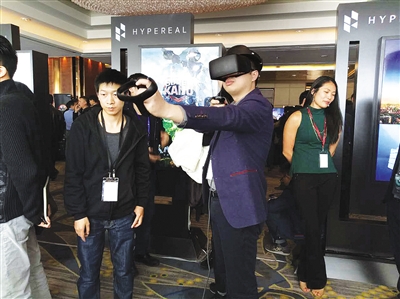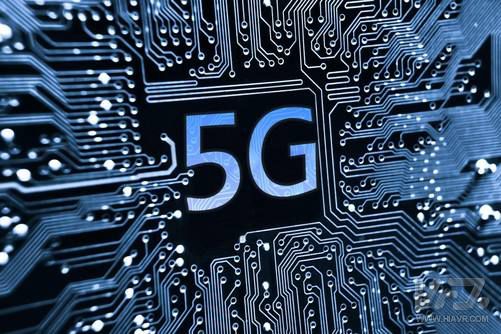The development of network transmission continues to drive the innovation of the terminal. The evolution from PCs to feature phones to smart phones is inseparable from the development of network transmission technologies. Mobile communications technology is about to usher in a new stage of development, 5G, which will release tremendous energy like 3G and 4G, further promoting the innovation of terminals. In the past two to three years, many people have closely linked 5G with VR. Facebook CEO Zuckerberg even believes that VR will become a 5G killer application.

The development of mobile communications has gradually moved toward the 5G era. From 1G to 4G are individual-oriented communications, 1G is to enable people to communicate in walking, that is, to achieve mobile communications; 2G coverage is broader, can carry out narrowband data communications; 3G opens the window of mobile broadband data communications; 4G The broadband experience is better. In the future, of course, 5G will continue to be consumer-oriented, and the enhancement of mobile broadband is that the download rate of a typical 5G application scenario can reach 1G, and the peak rate can reach 10G or more. However, if 5G only brings wider bandwidth and higher speed to everyone, it is obviously not enough.
According to the academician of the Chinese Academy of Engineering, Wu Hexin believes that the more important applications of 5G in the future should be industrial applications, which is also a major business growth point for future operators.
In the 3G era, no one thought that WeChat would be downloaded so widely in the 4G era. Similarly, what super applications will be born in the 5G era are also unknown. In the eyes of Qi Hexuan, many applications are not thought of before product development, but only after product development.
The future application space of 5G is indispensable, just as we cannot imagine the diversified applications of the current 4G era in the era of 2G. The 5G application scenario that most people can think of now is just the tip of the iceberg. The 5G era needs more application exploration.
At present, most people always associate 5G with VR. Because everyone is wondering what next-generation terminals are, many tech giants think of VR/AR, Google, Apple, Microsoft, Facebook, etc. all focus on VR/AR technology, and they all want to seize the change in the terminal. The first opportunity. VR/AR is precisely one of the important applications of 5G. The White Paper on 5G Economic and Social Impact published by relevant research institutes pointed out that virtual reality, augmented reality and smart driving are key applications recognized by the industry in the 5G era. Virtual reality technology has broad prospects, especially with the combination of mobile high-speed broadband, and it is more likely to leave the virtual reality experience out of the constraints of boxes and cables and go further.
And the combination of 5G and VR not only stays in the imagination, but also gradually approached the reality. ZTE Corporation has already conducted wireless VR virtual reality service demonstrations using AXON T7 smart phones through Pre5G Massive MIMO base stations based on 5G tag technology.
Different from the traditional VR demonstration, ZTE's VR glasses provided to customers do not need to drag a Data Cable to the tail, but access the live Pre5G wireless network through the mobile terminal, ensuring high bandwidth, low latency and mobility of VR services. .
It is understood that the Pre5G Massive MIMO solution launched by ZTE has applied some key 5G technologies to 4G commercial networks in advance, achieving 20M mobile bandwidth, and peak speeds of more than 400Mbps in commercial networks. It is 4G network spectrum efficiency 4 ~6 times. At the same time compatible with existing terminals, 4G users can access 5G without replacing the terminal.
VR can not be separated from 5GIt is not so much that 5G needs VR applications. It is better to say that the characteristics of the VR application itself determines that it cannot support 5G support. From the perspective of the development of the mobile Internet, portable, lightweight, and intelligent terminals are more easily popularized. However, due to the limitations of chips, batteries, and technologies, VR/AR terminals generally encounter difficulties such as light weight, short battery life, and unsatisfactory operation.
In order to balance the terminal's weight, computing speed, life time and price, many people proposed a "terminal + cloud" collaborative processing program. Professor Bao Hujun of Zhejiang University said: “We have to refactor the drawing pipeline, then we calculate part of it in the cloud, and some of it is calculated at the terminal. That means we have to split the GPU's drawing pipeline, put part of it in the cloud, and put it in part. To the terminal."
This can take full advantage of the cloud's powerful processing capabilities and reduce the pressure on the terminal processing, but this poses new challenges to the requirements of the network environment. VR/AR 3D computer graphics processing, 3D sound effects, etc., must consume a large amount of data traffic, 4G network speed is not enough, and 5G high bandwidth and low latency characteristics better meet the VR / AR. The 5G network will sink some of its content from the core network to the base station, allowing users to reduce delays in their nearest access, and introduce technologies such as mobile edge computing (MEC) and fog computing.
If artificial intelligence technology is introduced between the cloud and the terminal, the degree of dependence on the network will be reduced because the artificial intelligence technology can automatically adjust the display quality according to the network environment so as to ensure smooth operation. Bao Hujun pointed out that artificial intelligence technology can detect the computing power of the terminal and drawing pipelines will be automatically configured according to the quality of the network environment. If the network environment is poor, the display quality of the terminal will decrease, and vice versa. This elastic calculation will bring about a change in the content computing model.
However, if you want to ensure a good VR experience, there are still high demands on the network environment. Now experiencers who are immersed in VR for a long time will feel dizzy and uncomfortable because the movement state that people feel is inconsistent with the visual system, as if they are “fighting†in the brain, and people will feel dizzy. In order to solve this problem, it is necessary to increase the refresh rate and reduce the delay. It is usually necessary to increase the refresh rate to 100Hz or more (up to 1000Hz, our vision system can not completely distinguish the real or virtual), the delay does not exceed 20ms.
VR needs to ensure that all capture actions are less than 20ms into the headshot, the screen refresh rate and the screen resolution are high enough, and even some tactile feedback is required to deceive your brain to "this is all true" effect. Moreover, in VR/AR technology, speech recognition, line-of-sight tracking, and gesture sensing all require low delay processing, which also requires that the network delay must be sufficiently low. Therefore, when VR/AR encounters mobile communications, ultra-low latency 5G networks are very important.
5G is part of a general-purpose infrastructure and it is critical to the popularity of VR/AR terminals because the popularity of VR/AR terminals depends on the development and maturity of 5G.

In the 3G era, no one would think that WeChat will be downloaded so widely in the 4G era. Similarly, what super applications will be born in the 5G era are also unknown. Many applications do not think well before product development, but only after product development. The development of more fashionable VR/AR now requires not only bandwidth but also less delay. Because users can't satisfy the experience by wearing helmets to watch the pre-installed animations, they must connect to the cloud in real time, and to the cloud requires large-bandwidth, low-latency communications. It is expected that AR and VR can develop many industrial applications in the future.
State Key Laboratory of Networking and Switching Technology, Beijing University of Posts and Telecommunications
Qiao Xiuquan, Deputy Director of Network Service Basic Research Center, is not only a "faster" problemCompared with 4G, 5G is not only a “faster†problem, but 5G will adopt some new design ideas in the overall design of the network, such as software-defined network/network function virtualization/network slicing, and D2D. New technologies such as self-organizing communication and mobile edge computing can further meet the application requirements of low-latency classes and avoid delays in the transmission of core networks. These applications are sensitive to delay-sensitive AR applications, autonomous driving, and industrial IoT applications. There is better support.
AR/VR is characterized by high bandwidth, low latency, and high computational complexity. For example, one-second-long high-definition panoramic VR video is generally on the hundreds of megabytes, high-quality panoramic photos are more than ten trillion, with the current speed is difficult to use mobile phones to watch smoothly. In today's 4G networks, video can only be compressed or converted from a spherical panorama to a progressive loading of cube slices.
AR requires higher real-time performance and calculations. It requires real-time identification, automatic tracking, and posture adjustment. If all need to be processed from the cloud server, network delay is a big challenge. The new features of the 5G network can satisfy consumers' needs for high-bandwidth, low-latency and other higher service experience such as virtual reality, ultra-high definition video, AR/VR, and autopilot.
HTC Vive China President Wang Congqing needs 5G for VR and 360 degree panoramic videoWhat really needs 5G is VR. The GSMA official stated that 5G will bring a fourth industrial revolution in addition to a higher data rate. Now 3G and 4G have met the needs of most people on the Internet, such as sending WeChat, emails, etc., and really need 5G is VR and 360-degree panoramic video. Without VR, 5G does not need to exist, but without 5G, VR mobility will be difficult. Now that VR is more integrated with computers, in the long run, VR will be able to be taken outside like everybody wears glasses. This requires a very fast, low-latency network. This is what 5G can bring to everyone in the future.
hdmi calbe, display port hdmi cable, vedio cable hdmi, high resolution hdmi cable
hdmi calbe, display port hdmi cable, vedio cable hdmi, high resolution hdmi cable
Ningbo Multitasking Electronic Co.,Ltd , https://www.smartmultesic.com